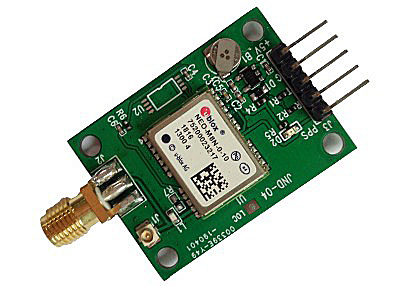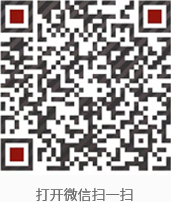The wireless module extends to many systems such as railroad wireless communication, industrial automation, hydrological monitoring system, oil field data acquisition, coal mine safety monitoring system, pipeline network monitoring, sewage treatment monitoring and so on. The communication distance of wireless module is an important index, how to maximize the effective communication distance has been the question of customers.
Generally speaking, an antenna is a converter - converting the guided waves transmitted on a transmission line into electromagnetic waves transmitted in free space or vice versa.
Based on debugging experience, this article explains the selection and use of antennas, hoping to help engineers quickly debug communication distance.
The main parameter that affects the communication distance of the wireless module is the transmit power. Under the premise of determining the transmit power to meet the demand, you can find the transmit power of the wireless module and the corresponding ideal transmission distance in the manual, and then consider the selection and direction of the antenna.
1. Selection of suitable antenna
There are many forms of antenna classification, broadly divided into flexible (FPC) soft antenna, board PCB antenna, glue stick antenna, suction cup antenna and so on. For example, Chengdu sold 100 million dollars TX433-NP-4310, TX433-JK-20, TX433-XP-100 antennas. The main specifications of the antenna include frequency range and VSWR or VSWR, antenna gain, polarization and impedance.
Select the frequency range as required. The VSWR should preferably be less than 1. Pay special attention to the VSWR parameter. After purchasing the antenna, it is better to use network analyzer SWR5; Antenna gain also affects the transmission distance; Polarization is divided into linear polarization and circular polarization; Impedance needs to match with the output impedance of the wireless module, which is 50 ohms.
2.Directionality of antenna
Antennas have directionality, which means that antennas have different radiation or reception capabilities for different directions in space. The directionality of an antenna is usually measured using a directional map, the frequency range is 2400MHz to 2500MHz antenna directional map.
When the antenna is placed vertically, the direction with the darkest red color is the direction in which the antenna has the strongest radiation or reception capability. Therefore, when installing the antenna, the antenna should be installed as far as possible in the red direction to ensure good enough signal quality. In addition, flat metal plates shield the signal, so there should be no metal planes in the transmit and receive directions.
When wireless modules communicate with each other, the direction of the antenna must be considered. The communication distance is maximized when the communication space is not blocked and the antenna direction corresponds to the direction of the strongest radiation. If the antenna is not installed properly, the communication distance will be shortened or even impossible.
Summarize
Engineers often encounter weak signals, communication distances that do not reach the manual instructions or high packet loss rates when communicating with wireless modules. If there is no problem with the wireless module itself, you may want to talk about the performance of the antenna itself, and then get better results in the direction of strong antenna signal radiation.
Of course, there are many factors affecting the communication distance of the wireless module, and the antenna is only one of them. If we want to optimize the antenna to achieve better communication results, then the choice of antenna should match the module, but this is not absolute. In practical application, the communication distance of antenna with slightly poorer performance may be farther, so the choice of antenna should also be applied flexibly.

Ltd. specializes in high-precision GNSS modules and wireless communication products, technology development and application promotion service providers, relying on the wireless communication technology in the field of R & D and promotion of experience, JUNODA set up a team with a wealth of experience in hardware and software development technology, aimed at domestic and foreign OEM / ODM customers and system integrators to provide high-quality, high-performance wireless modules and applications! We aim to provide high-quality, high-performance wireless modules and application programs to OEM/ODM customers and system integrators at home and abroad, and create long-term value for customers!
The company mainly provides integrated antenna module, dual-frequency high-precision module, single-frequency high-precision module, thousand-seeking high-precision module, Zhongke micro-positioning module, U-BLOX positioning module, SICOM communication module, inertial navigation DR module, UWM GNSS module, RTK differential module, 4G communication module and high-precision antenna, etc., the products are sold well in Beijing, Shanghai, Shenzhen, Guangdong, Jiangsu, Zhejiang, Sichuan, Hunan and other parts of the country. Our GNSS modules are widely used in many application fields, such as drones, vehicle security monitoring and dispatching, automatic bus stop announcement, DVR, car DVD navigation, GPS electronic dog, synchronized timing, high-altitude balloon monitoring, engineering machinery, industrial automation, etc. In the field of wireless communication products, the company is closely involved in the field of wireless communication, such as RTK differential module, 4G communication module and high-precision antenna.
In the field of wireless communication products, the company follows the latest development of international communication technology, introduces and acts as an agent for wireless communication modules that meet the market demand, and the products have a comprehensive layout from 2G, 3G, 4G, and are widely used in financial electronic payment, vehicle remote control, remote advertising information, repeater monitoring, mobile Internet terminals, smart home, remote medical care, network testing, enterprise information management, anti-theft alarm, Remote video transmission, intelligent meter reading, mobile computing, network navigation, voice phone, wireless gateway and other fields. Focused areas include video surveillance, network optimization, routers, POS and other M2M industry applications.
If you need to consult, please contact online customer service!














